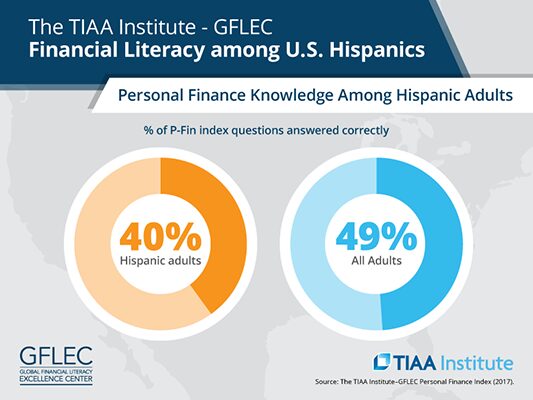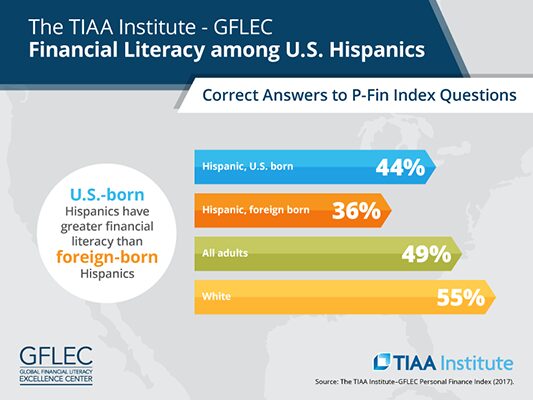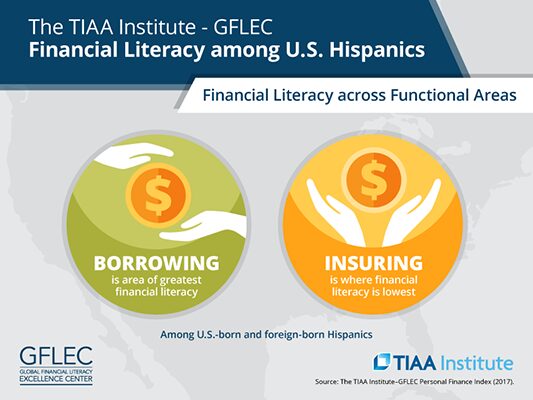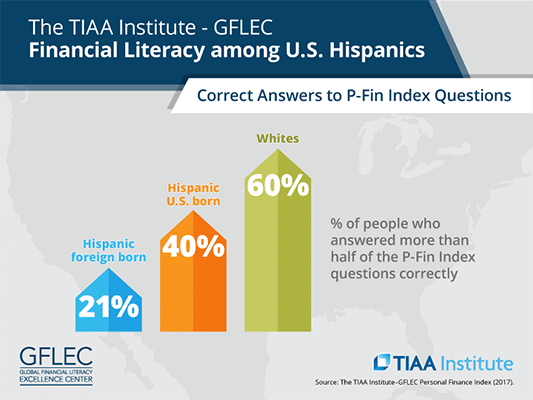LATEST REPORT
Financial Literacy among U.S. Hispanics: New Insights from the Personal Finance (P-Fin) Index
Authors
Andrea Hasler, GFLEC
Annamaria Lusardi, GFLEC
Paul J. Yakoboski, TIAA Institute
About the Survey
The TIAA Institute-GFLEC Personal Finance Index (P-Fin Index) measures knowledge and understanding which enable sound financial decision-making and effective management of personal finances. The P-Fin Index was developed by the TIAA Institute and the Global Financial Literacy Excellence Center, in consultation with Greenwald & Associates. The initial wave of the survey was fielded online in September 2016 with a nationally representative sample of U.S. adults, ages 18 and older, for a total of 1,043 respondents. Hispanics were oversampled during fielding of the survey.
The capacity to produce a nuanced examination of financial literacy across different areas of personal finance is what distinguishes the P-Fin Index from other surveys. The index is based on responses to 28 questions, covering 8 functional areas: earning, consuming, saving, investing, borrowing/managing debt, insuring, comprehending risk, and go-to information sources.
Summary of Main Findings
- Financial literacy programs that separately address U.S.-born and foreign-born Hispanics are likely to experience better results for both groups.
- As growth in the U.S. Hispanic population is increasingly driven by births, the gap in Hispanic financial literacy relative to the general population will likely decrease.
- The increasing educational attainment of Hispanics will further decrease the financial literacy gap.
- Given the modest levels of financial literacy in the general population, eliminating the financial literacy gap should not be the ultimate objective. Rather, equalization at a higher overall level of financial literacy for all should be the objective.
![]() We hope that targeted financial education programs for Hispanics born in the U.S. and for those born outside the U.S. will reduce the financial literacy gap we see and also allow both the Hispanic and the general population to rise above the modest financial literacy knowledge levels we witness overall among U.S. adults.
We hope that targeted financial education programs for Hispanics born in the U.S. and for those born outside the U.S. will reduce the financial literacy gap we see and also allow both the Hispanic and the general population to rise above the modest financial literacy knowledge levels we witness overall among U.S. adults.![]()
— Annamaria Lusardi




